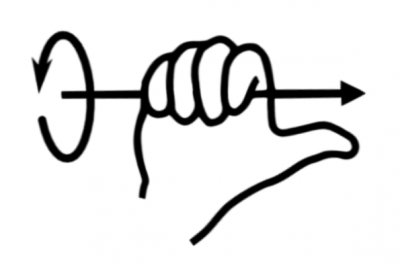Difference between revisions of "Understanding CNC Bender Rotation Directions"
| (10 intermediate revisions by one user not shown) | |||
| Line 1: | Line 1: | ||
[[image:cncbender_logo.jpg|400px]] | [[image:cncbender_logo.jpg|400px]] | ||
| − | + | Positive direction rotations in benders are NOT standardized. It is important to understand how to determine rotation directions to avoid confusion through mirror-imaging. | |
| − | # Regardless of which way a bender bends (left or right), the direction of the negative and positive rotations stay the same when the controls are the same type. | + | # Regardless of which way a bender bends (left or right), the direction of the negative and positive rotations stay the same when the controls are the same type. Any control that changes direction based on bend-hand does not follow the most-used approach for rotation directions (See Note 1 below). So the "hand" of the bender shouldn't matter.<br><br> |
| − | # The direction of rotation can be safely indicated with a CW or CCW direction of rotation from a common viewpoint relative to the bender. The most common viewpoint is from standing in front of the bender and looking into the collet.<br><br> | + | # The direction of rotation can be safely indicated with a CW or CCW direction of rotation from a common viewpoint relative to the bender. The most common viewpoint is from standing in front of the bender and looking into the collet. (See Note 2.)<br><br> |
| − | # | + | # When a bender collet rotates CCW to rotate positive, then it uses the American industry standard, the standard for our software.<br><br> |
| − | CNC Bender Software can be setup with POSITIVE rotating either CW or CCW. However, by default, all CNC Benders leave SMT setup with CCW the positive direction. | + | CNC Bender Software can be setup with POSITIVE rotating either CW or CCW. However, by default, all CNC Benders leave SMT setup with CCW being the positive direction. |
| + | |||
| + | |||
| + | Note 1: It isn't logical because the bend programs written on either hand bender would then be incompatible with the opposite hand benders (left to right and right to left). | ||
| + | |||
| + | Note 2: The robotics and engineering community uses a simple right-hand or left-hand rule to designate which way an axis spins positive. For example, this is an image from the Bobcad-CAM site: | ||
| + | |||
| + | [[image:bobcad_righthand_rule.png|400px]] | ||
| + | |||
| + | <br><br> | ||
| + | In this "right-hand rule" illustration: | ||
| + | |||
| + | # You are standing in the front of the bending looking toward the back. | ||
| + | # Hold your right hand up in front of you. | ||
| + | # Point the thumb of your right hand toward your face. | ||
| + | # The arrow centerline is the centerline of the tube coming out of the collet. | ||
| + | # The direction of the curl of the rest of your fingers represents the direction of a positive rotation. | ||
| + | |||
| + | (European and Asian benders usually follow the LEFT-HAND rule.) | ||
Latest revision as of 01:18, 30 March 2021
Positive direction rotations in benders are NOT standardized. It is important to understand how to determine rotation directions to avoid confusion through mirror-imaging.
- Regardless of which way a bender bends (left or right), the direction of the negative and positive rotations stay the same when the controls are the same type. Any control that changes direction based on bend-hand does not follow the most-used approach for rotation directions (See Note 1 below). So the "hand" of the bender shouldn't matter.
- The direction of rotation can be safely indicated with a CW or CCW direction of rotation from a common viewpoint relative to the bender. The most common viewpoint is from standing in front of the bender and looking into the collet. (See Note 2.)
- When a bender collet rotates CCW to rotate positive, then it uses the American industry standard, the standard for our software.
CNC Bender Software can be setup with POSITIVE rotating either CW or CCW. However, by default, all CNC Benders leave SMT setup with CCW being the positive direction.
Note 1: It isn't logical because the bend programs written on either hand bender would then be incompatible with the opposite hand benders (left to right and right to left).
Note 2: The robotics and engineering community uses a simple right-hand or left-hand rule to designate which way an axis spins positive. For example, this is an image from the Bobcad-CAM site:
In this "right-hand rule" illustration:
- You are standing in the front of the bending looking toward the back.
- Hold your right hand up in front of you.
- Point the thumb of your right hand toward your face.
- The arrow centerline is the centerline of the tube coming out of the collet.
- The direction of the curl of the rest of your fingers represents the direction of a positive rotation.
(European and Asian benders usually follow the LEFT-HAND rule.)

